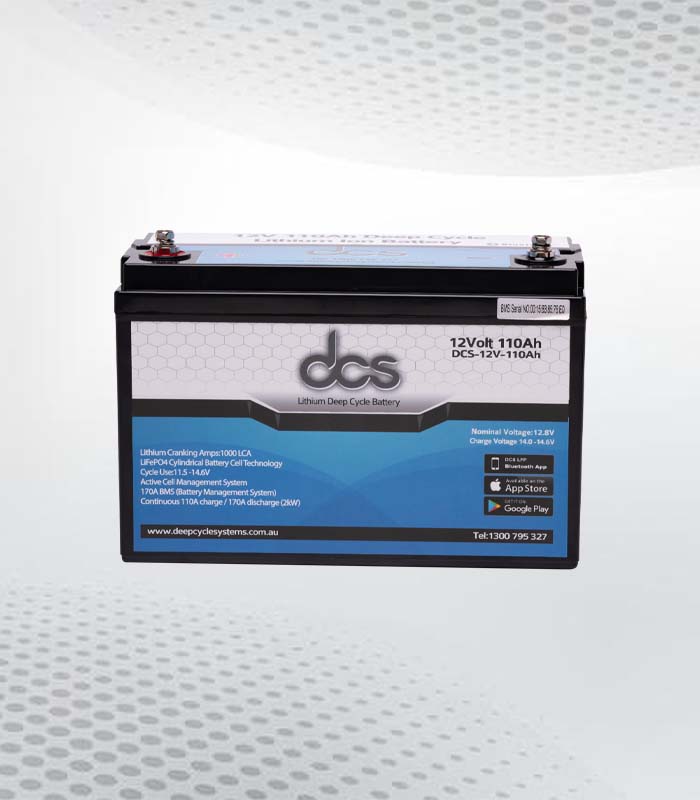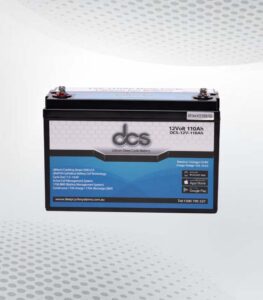Welcome to the exciting world of Lithium Ions batteries! These powerful and versatile energy storage devices have revolutionised our use and reliance on technology. Lithium-ion batteries have become an essential part of our daily lives, from powering our smartphones and laptops to storing renewable energy for our homes. But what exactly are these batteries made of? How do they work? And what makes them so popular? This blog post will deeply dive into lithium-ion batteries, exploring their composition, functioning, and applications. So buckle up and get ready to discover the science behind these compact and efficient powerhouses!
Understanding the Basics of Lithium Ion Batteries
Fondly abbreviated as Li-ion, lithium-ion batteries represent an exciting class of rechargeable power sources. The secret behind their magic is the Li ions that energetically shuttle from the negative electrode to the positive electrode when the battery discharges, then merrily scoot back during charging.
Their enthusiasm for this back-and-forth journey makes them a powerhouse, keeping our gadgets up and running. Their popularity isn’t surprising; these are some of the most energy-rich rechargeable batteries in the market, holding a significant charge per unit of size or weight.
This allows them to fuel devices from pocket-sized smartphones to larger applications like electric vehicles. With the world becoming increasingly digital, the importance of understanding these small yet mighty powerhouses can’t be overstated.
The forthcoming sections will explore their inner workings, different types, benefits, and environmental impacts. It’s time to illuminate the brilliance of these ubiquitous energy sources.
 The Science behind Lithium Ion Batteries
The Science behind Lithium Ion Batteries
Stepping into the world of chemistry, let’s decipher the complex yet captivating mechanism powering lithium-ion batteries. Inside each battery are two electrodes, known as the cathode (positive) and anode (negative), typically composed of lightweight and highly reactive lithium and carbon?
The ‘charging’ and ‘discharging’ process lies at the heart of a lithium-ion battery’s operation. When the battery charges, an electric current nudges the Li ions from the cathode to the anode, storing energy as they relocate.
Conversely, when the battery discharges, the stored energy is unleashed as the ions return to the cathode. So, next time your device springs to life, remember the active little Li ions making their round-trip inside your battery!
The Different Types of Lithium Ion Batteries
Welcome to the diverse universe of lithium-ion batteries! These energy-packed cells come in a medley of types, each designed for a specific purpose.
Firstly, we have Lithium Cobalt Oxide, a staple in your smartphones and laptops. For electric vehicle aficionados and power tool enthusiasts, Lithium Manganese Oxide and Lithium Nickel Manganese Cobalt Oxide are the usual suspects.
The lithium iron Phosphorus steals the show for high-power applications. The materials used in these batteries can vary significantly, influencing their energy density, stability, cost, and safety.
From the small gadgets in your pocket to the electric car in your garage, the versatility of lithium-ion batteries is truly incredible! Unsurprisingly, these powerhouses have become the go-to solution for portable power needs.
So, next time you marvel at your battery-powered device, take a moment to appreciate the science and diversity that underpins lithium-ion battery technology.
Advantages of Using Lithium Ion Batteries
Step into the limelight, lithium-ion batteries, and let’s unveil your impressive array of advantages! Packed to the brim with energy, these batteries boast a high energy density, meaning they can squirrel away a substantial amount of power in a compact space.
Picture an energetic ant with the strength of an elephant, and you’ve got the idea! The standout feature of these batteries is their impressively low self-discharge rate. This trait means they maintain their charge when idle, always ready to act when called upon.
There is no need for midday power naps here! As maintenance-free as a pet rock, they require no fuss, no muss and are memory effect-free, forgetting their past charges and discharges. This means you can charge your battery without worrying about reducing its capacity.
And did we mention they’re feather-light? This makes them the perfect companion for our beloved portable electronics, ensuring our devices can always be by our side. From your pocket to the palm of your hand, lithium-ion batteries bring power to your fingertips!
The Environmental Impact of Lithium Ion Batteries
As we bask in the marvel of lithium-ion batteries, we must consider their environmental footprint too. Unearthing lithium, the star of our battery show, can have less than glamorous consequences.
The process can lead to water pollution and soil degradation, casting a shadow over the many advantages of lithium-ion batteries. Yet, amidst the challenge lies an opportunity. Many companies are setting their sights on recycling and repurposing lithium-ion batteries.
This circular approach to battery life could be a game-changer, significantly reducing the environmental impacts. It’s like giving our batteries a second act, reducing waste and curbing the need for fresh lithium extraction.
So, while the lithium-ion battery story has environmental hiccups, rest assured steps are being taken to make it a tale of sustainable success. Stay tuned as we journey forward, aiming for a future where energy storage and environmental responsibility go hand in hand.
Charging and Discharging Lithium Cells
Let’s venture into the core of Lithium Cell activity – the charging and discharging process. Picture this: during charging, an electric current plays the role of a conductor, orchestrating a dance of Li ions from the positive electrode towards the negative.
This movement stores energy for later use. Now, it’s showtime! When you need to power your device, the battery discharges, reversing the ion journey.
These energetic ions return to the positive electrode and release the stored energy to fuel your gadget. It’s like a miniature marathon taking place inside your battery! However, it’s essential to remember that our lithium-ion cells prefer moderation.
Overcharging or allowing them to drain completely is akin to overworking them, negatively impacting their performance and longevity. Treat them with care, and they’ll reward you with reliable power. Keep your lithium-ion cells happy, and they’ll keep your devices humming!
The Future of Lithium Ion Batteries
The path ahead for lithium-ion batteries promises even greater achievements. Scientists are currently delving into groundbreaking research to push the boundaries of these power cells.
Their focus? To enhance energy density, prolong battery life, and bolster safety features. As the world leans towards electric vehicles and renewable energy, the demand for lithium-ion batteries is set to soar.
Furthermore, the era of the Internet of Things beckons – a future where even our kitchen appliances will require smart, efficient power sources. From eco-friendly cars to your smart fridge, lithium-ion batteries are gearing up to keep our tech-driven lives humming.
This thrilling blend of research, innovation, and demand signals a future where lithium-ion batteries will hold even more sway in our daily lives. So strap yourself in, as the lithium-ion journey is continuing and accelerating!
Optimising Lithium Ion Battery Performance
Squeezing every last power drop from your lithium-ion battery is simpler than you think. It’s all about adopting a few wise habits. One golden rule to live by:
Resist the urge to charge your battery to the max or drain it completely. Partial is the new full when it comes to lithium-ion batteries! Overcharging or total discharging can take its toll, so aim to keep it within the sweet spot of 20-80% charge.
And remember, it’s not just about what you do, but also where you do it. Much like us, a lithium-ion battery prefers moderate climes over extreme heat or cold. So keep your devices out of the sun and away from the chills.
Are you planning to put your gadget on the shelf for a while? Then remember to leave it partially charged. This keeps the battery in good shape during its break. So, follow these steps to make your lithium-ion battery’s performance sing!
Maximising Lithium Battery Lifespan
Consider partial discharges as lithium-ion batteries’ best friends! Complete discharges can put undue stress on the battery, so try to avoid them where possible.
Keep It Cool
Temperature matters! Extremely hot or cold environments can harm your lithium-ion battery. To keep it functioning at its peak, a cool, dry place is where it thrives best.
Storage Savvy
Planning to put your battery on standby for a while? Make sure it’s stored at a 50% charge in a cool, dry environment. This helps maintain the battery’s health during its hibernation period.
Powering Tomorrow’s Devices
Imagine a world with flying drones delivering packages, electric vehicles whizzing past, and wearable tech monitoring your health – the future of technology is exhilarating! Is the true hero propelling this revolution? It’s the humble yet mighty lithium-ion battery underpinning these cutting-edge devices.
With their impressive energy density and lengthy lifespan, these compact powerhouses are poised to energise the next wave of gadgets. They’re the invisible force, fuelling the technological evolution, ensuring our future widgets won’t be left powerless.
Lithium-ion batteries are poised to turn the seemingly impossible into a reality, setting the stage for a future where convenience and innovation go hand in hand. So watch this space as the lithium-ion battery saga unfolds, silently powering our tomorrow!
FAQs
1. Why do lithium-ion batteries hold more charge?
Their secret lies in the energetic lithium ions. These tiny powerhouses move between the anode and cathode during charging and discharging, storing and releasing energy; their high energy density contributes to their long-lasting charge.
2. Are lithium-ion batteries environmentally friendly?
Mining lithium can impact the environment negatively. However, companies are developing methods to recycle and repurpose these batteries, reducing the need for new lithium and their environmental impact.
3. How can I maximise my lithium-ion battery lifespan?
Avoid complete discharges and excessive heat or cold. Store idle batteries at a 50% charge. Remember, partial is the new full for lithium-ion batteries.
4. What are the different types of lithium-ion batteries?
They come in a range of types, each with specific applications. Examples include Lithium Cobalt Oxide for portable electronics and Lithium Iron Phosphate for high-power applications.
5. What’s the future of lithium-ion batteries?
Research is underway to increase their energy density and safety. As the demand for electric vehicles and renewable energy grows, so will the reliance on lithium-ion batteries. They’re also set to power the upcoming Internet of Things era.
Conclusion
We’ve journeyed through the intriguing world of lithium-ion batteries, from their energetic ions and impressive energy density to their different types and environmental footprint. Clearly, these powerful cells are more than just the heartbeat of our devices; they’re the unsung heroes of the digital age, facilitating a new era of technological advancement. As we face the future of electric vehicles, renewable energy and the Internet of Things, the role of lithium-ion batteries is set to become even more pivotal.
This Article Was First Published On:
| Other Good Articles to Read |
| Niche Blogs Connect |
| Blogs 97 |
| Blog Stitution |
| Blogs Unplugged |
| Blogs Cotch Rouge |
| Blog Signatr |
| Blog Sintonias |
| Blog Zilla |
| Consumer Forums |
| Finance Forums |
| G Blogs |
| Too Blog |
| Related Business Listings |
| Directory Submissions |
| Regional Directory |



